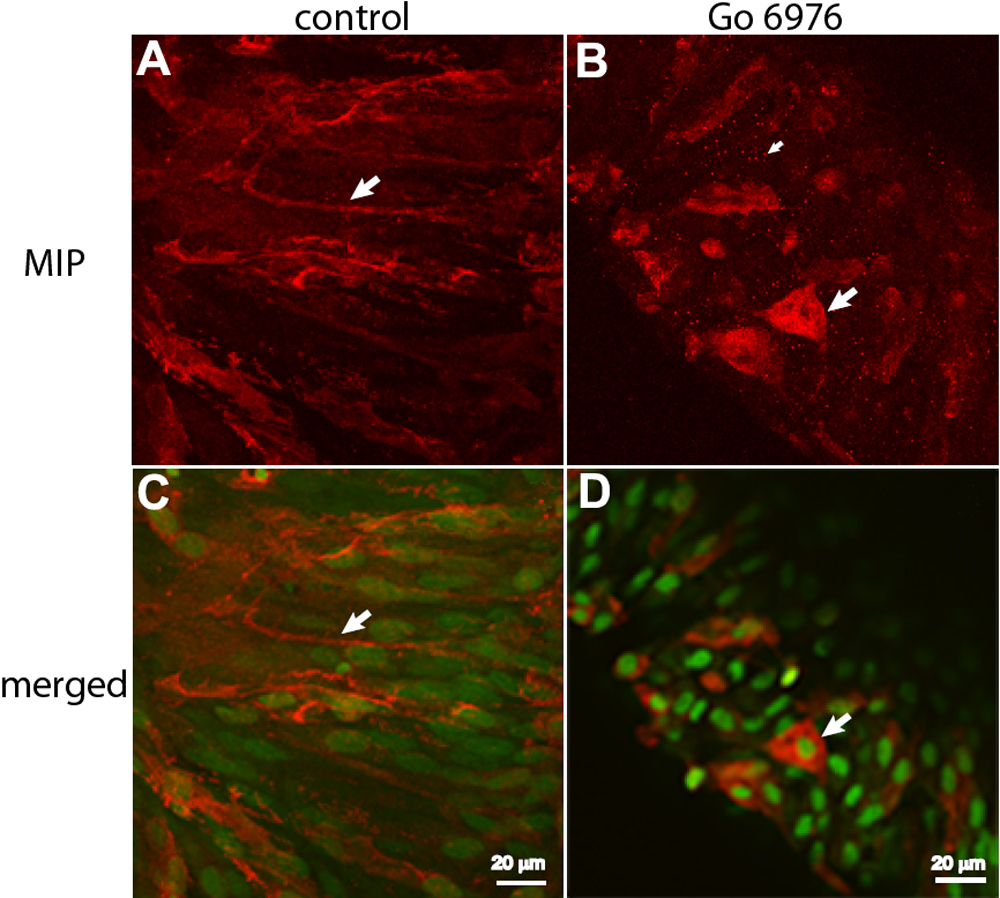![]() Figure 2 of Golestaneh, Mol Vis 2008;
14:1006-1014.
Figure 2 of Golestaneh, Mol Vis 2008;
14:1006-1014.
Note that the slide bar at the bottom of the quicktime movie can be used to manually control the flow of the movie. If you are unable to view the movie, a representative frame for each movie is included below (C and D).
| This animation requires Quicktime 6 or
later. Quicktime is available as a free download. |
